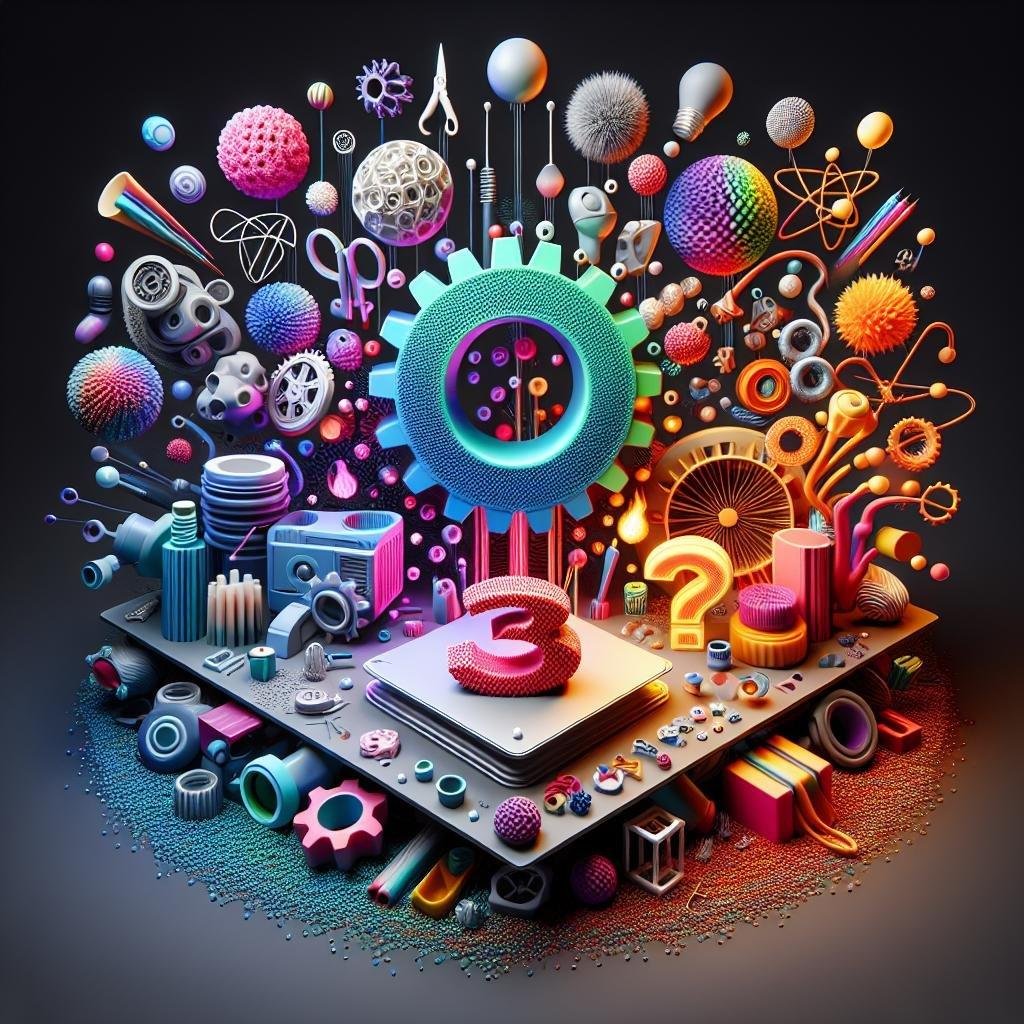In recent years, the mesmerizing world of 3D printing has shifted from the realm of science fiction to an exhilarating reality, where creativity knows no bounds and innovation runs wild. Picture a universe where your most ambitious designs leap from your imagination into tangible form, all at the push of a button. But, as any seasoned 3D printing enthusiast will tell you, the magic truly begins with the right materials. From the classic to the cutting-edge, the array of 3D printing materials now available is as diverse as it is exciting, each with its own unique properties and possibilities. Whether you’re a hobbyist eager to experiment or a professional designer looking to refine your craft, the choice of material can turn an ordinary project into an extraordinary masterpiece. Join us on this journey as we explore the top 10 3D printing materials you simply must try, each a key to unlocking new dimensions in your creative endeavors.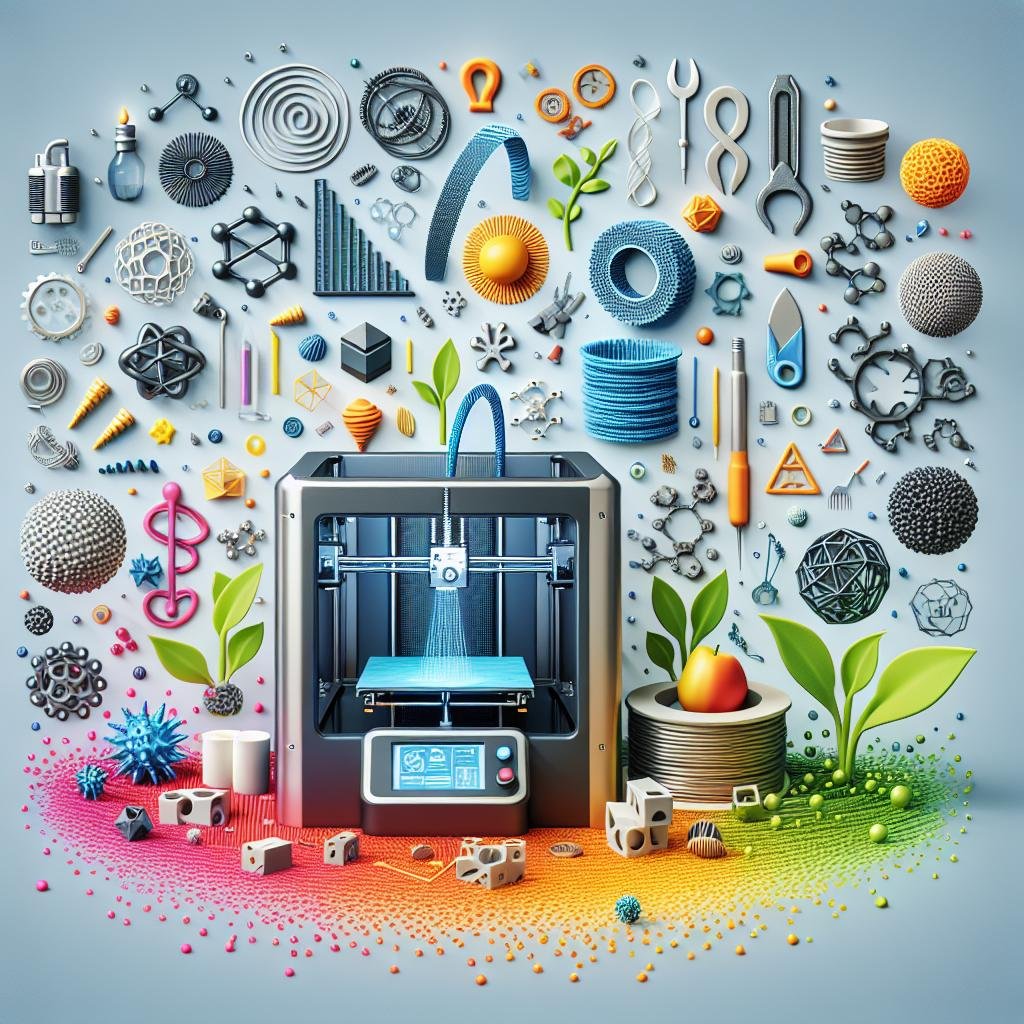
Exploring the Basics Dive into the World of 3D Printing Materials
In the vibrant landscape of 3D printing, the choice of material can dramatically influence the final outcome of your creations. Whether you’re crafting intricate art pieces or functional prototypes, understanding the different materials available is crucial. PLA (Polylactic Acid), known for its ease of use and bio-degradable nature, is a fantastic starting point for beginners. Its low melt temperature and variety of colors make it perfect for decorative household items and educational projects. ABS (Acrylonitrile Butadiene Styrene), another popular choice, offers greater strength and durability, making it an ideal option for moving parts or structural pieces. Embrace the flexibility of TPU (Thermoplastic Polyurethane) for projects requiring elasticity, such as custom gaskets or even shoe soles.
If you’re venturing into more advanced territories, consider the conductive capabilities of Graphene-enhanced PLA for projects with embedded electronics. For displays with a touch of elegance, Silk PLA offers a striking glossy finish without compromising on ease of printing. On the industrial front, Nylon stands out for its exceptional strength and flexibility, perfect for robust mechanical components. For those who dream of metallic creations, Metal-filled Filaments bring the charm of metal to the table, leaving your projects weighty and unique. Here is a quick reference for some of these materials:
| Material | Key Feature |
|---|---|
| PLA | Biodegradable, Easy to use |
| ABS | Durable, Strong |
| TPU | Flexible, Elastic |
| Nylon | Strong, Flexible |
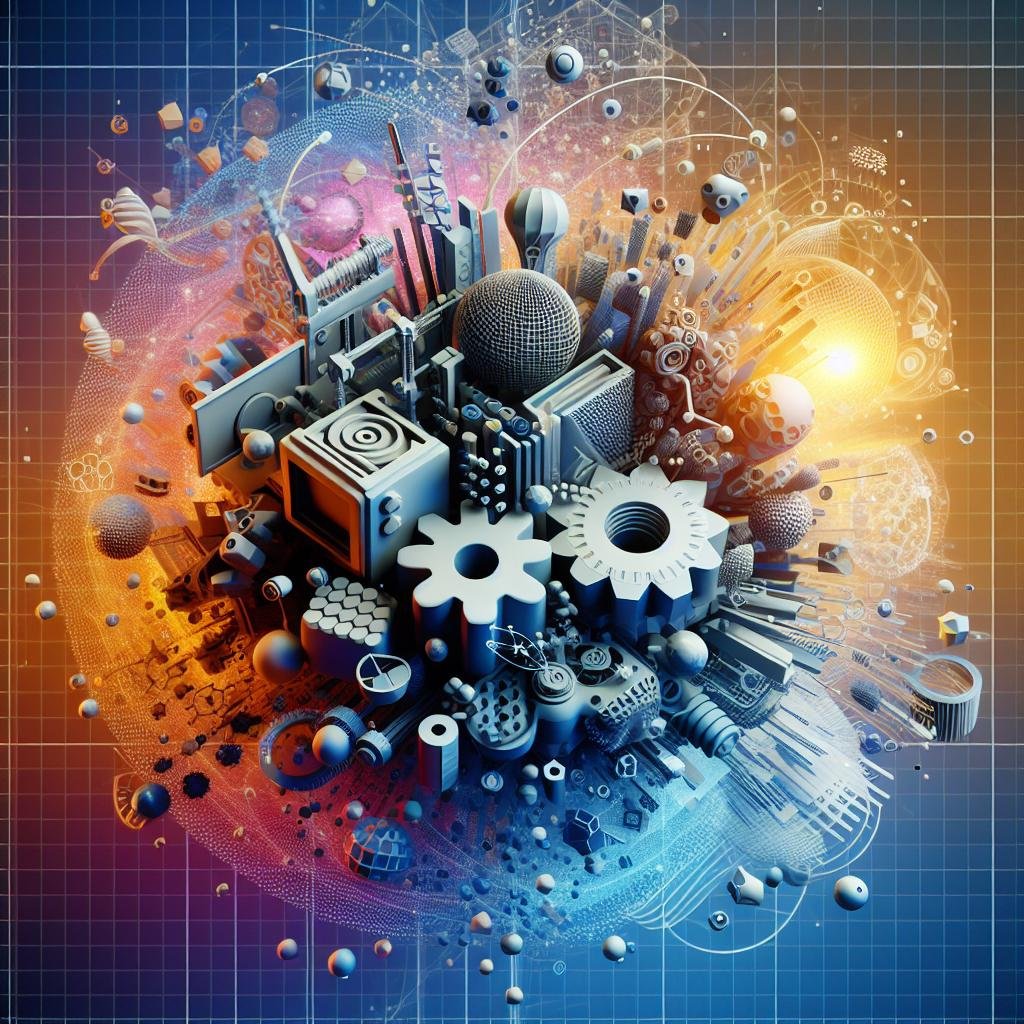
From Plastics to Metals Discover Versatile Options for Every Project
From the most intricate designs to the most demanding parts, 3D printing offers a myriad of material choices that cater to every need and project scope. Embrace the classic versatility of PLA and ABS plastics, trusted for their ease of use and smooth finishing. For more robust mechanical properties, explore PETG, renowned for its balance of strength and flexibility, or step into the world of Nylon for high-tempo projects demanding elasticity and durability. If your masterpiece demands a touch of the extraordinary, Polycarbonate or Carbon Fiber Blends might be your call, delivering unparalleled strength for those industrial-grade projects.
Expand your creative potential with the addition of metals to your 3D printing repertoire. Stainless Steel not only offers exemplary strength but also a polished finish suitable for both prototyping and functional parts. Titanium, on the other hand, grants access to aerospace grade performance that’s surprisingly accessible. Copper and its heat dissipation capabilities are unmatched for electronic applications. Don’t forget the aesthetics offered by Bronze and Brass, perfect for artistic pieces or intricate jewelry. To help you navigate these choices, here’s a quick overview:
| Material | Key Properties | Best For |
|---|---|---|
| PLA | Biodegradable, Easy to Print | Prototyping |
| ABS | Durable, Impact Resistant | Functional Parts |
| Stainless Steel | High Strength, Polished Finish | Industrial Components |
| Titanium | Lightweight, Strong | Aerospace Parts |
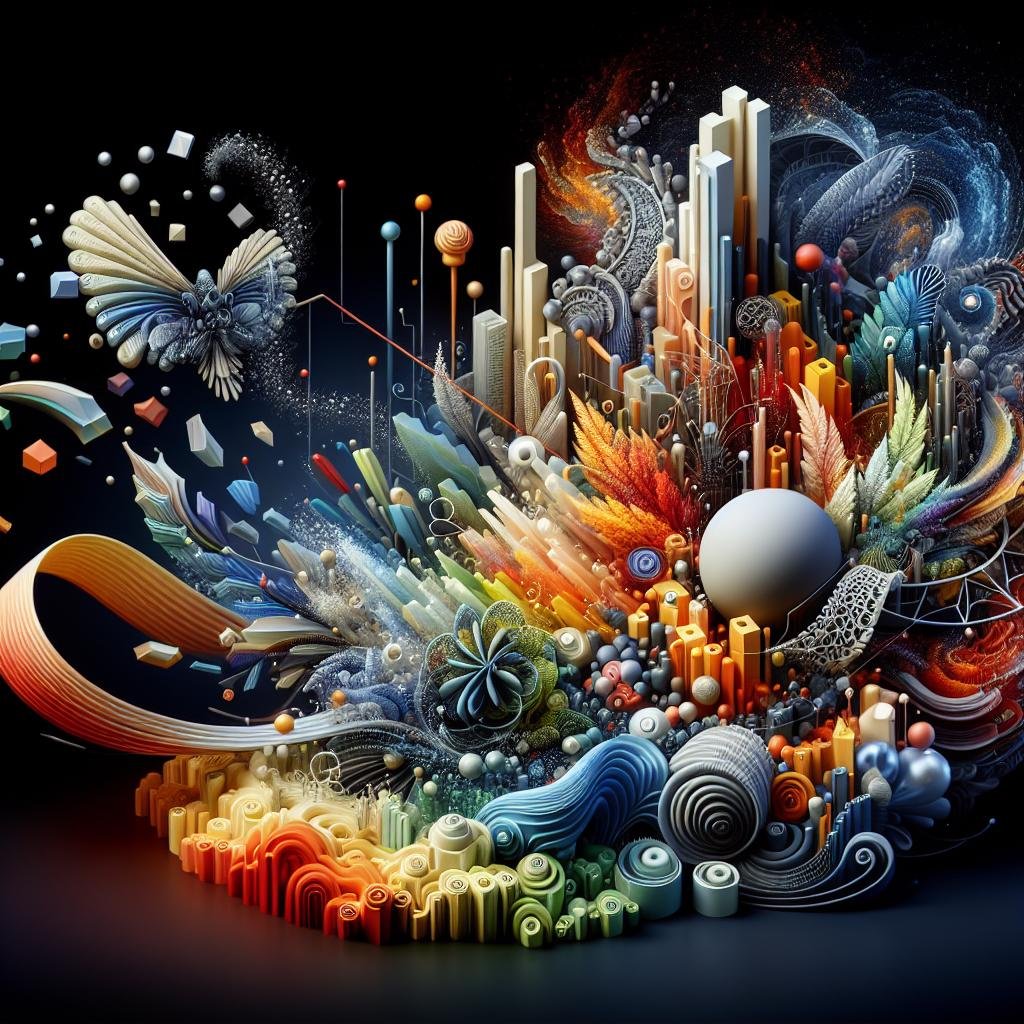
Eco-Friendly Choices Go Green with Sustainable 3D Printing Alternatives
Embracing sustainability in the world of 3D printing can significantly reduce our environmental impact while still pushing the boundaries of innovation. Among the myriad of materials available, several eco-friendly options stand out for their unique properties and performance. PLA, or polylactic acid, is one of the most popular because it’s made from renewable resources like cornstarch and sugarcane. PLA is biodegradable under certain industrial conditions, making it a sustainable choice that doesn’t compromise on versatility. Recycled PET is another excellent option, derived from post-consumer waste such as plastic bottles, offering a way to transform trash into high-performance design.
- Hemp-filled filaments: These use hemp’s natural strength, reducing plastic content.
- Wood-based filaments: Offer a natural look and feel for artistic and decorative projects.
- Bamboo composite: Perfect for creating structures that mimic wood grain without deforestation.
- Cellulose-derived material: 100% biodegradable and sourced from a natural polymer.
| Material | Source | Key Feature |
|---|---|---|
| PLA | Cornstarch | Biodegradable |
| Hemp Filament | Hemp Plants | Strength |
| Recycled PET | Plastic Bottles | Reusability |
Additionally, exploring options like algae-based filaments can contribute to reducing carbon footprints since algae absorbs carbon dioxide when grown. Another intriguing alternative is upcycled 3D printer filament produced from ocean waste, directly tackling the pressing issue of marine pollution. These innovative solutions not only promote environmental responsibility but also enhance creativity, allowing designers to craft with consciousness. By choosing materials that are sustainable, we align technological advancement with environmental stewardship and support the transition to a greener future.
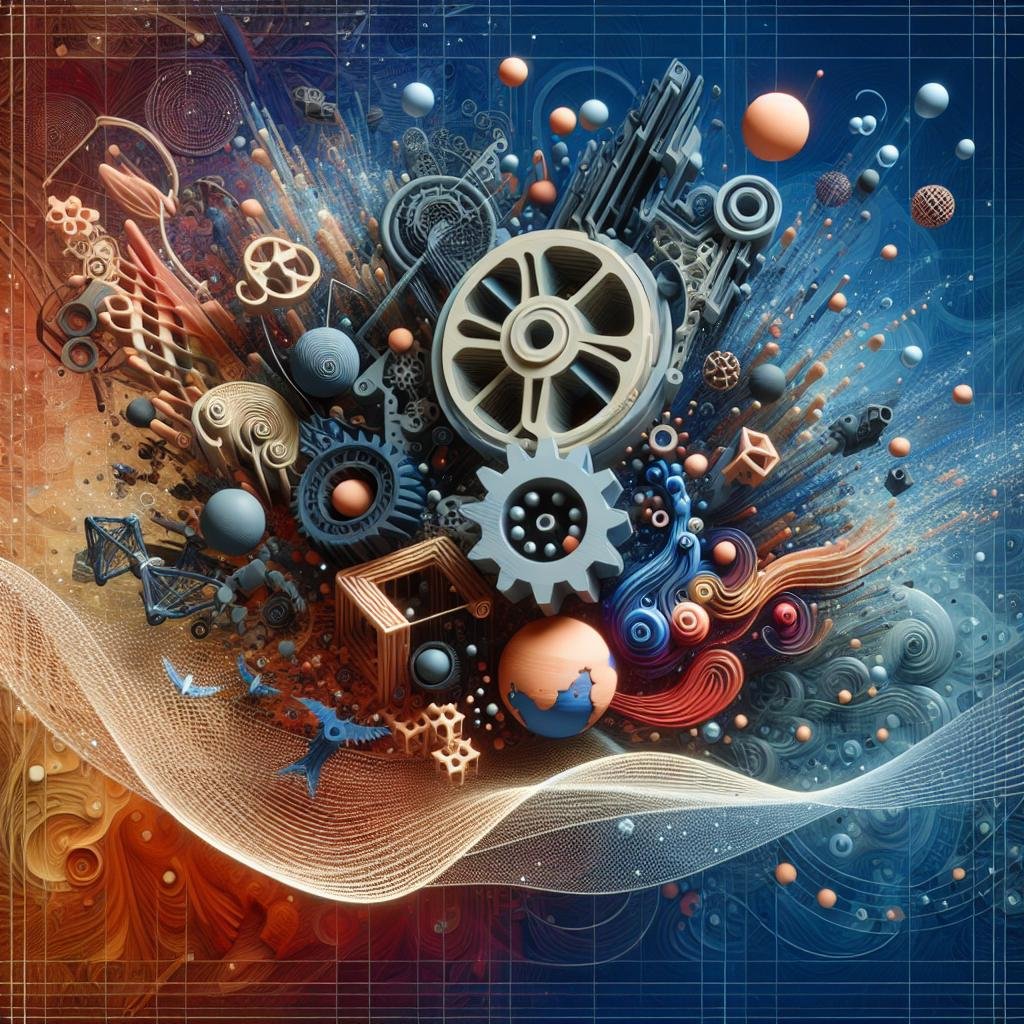
Pro Tips and Tricks Maximize Quality with Expert Material Recommendations
When diving into the world of 3D printing, choosing the right material is crucial to achieving top-tier quality. For intricate models, PLA and ABS remain top contenders, thanks to their versatility and ease of use. PLA is perfect for beginners due to its low warp rate and smooth finish, while ABS is ideal for those requiring sturdiness and heat resistance. For more experienced printers looking to experiment, PETG offers the optimum blend of flexibility and strength, and Nylon provides additional resilience, making it ideal for industrial-grade projects.
Beyond these staples, many lesser-known materials can transform your project from simple to spectacular. Consider Wood Filaments for stunning, organic textures, or Flexible Filaments to craft bendable models. Dive into the metallic realm with Metal-infused PLA for a touch of shine without sacrificing print simplicity. Polycarbonate rivals the strength of ABS but offers greater clarity, ideal for transparent objects. Lastly, venture into the world of Conductive Filaments if your project demands that extra touch of electronic functionality. Each material can advance your project in unique ways, so it’s essential to understand their characteristics and potential.
| Material | Best For | Unique Trait |
|---|---|---|
| PLA | Beginners | Low warp |
| ABS | Durability | Heat resistance |
| PETG | Strength | Flexibility |
| Wood Filaments | Texture | Organic look |
| Conductive Filaments | Electronics | Electrical conductivity |
Q&A
Q: What makes 3D printing such a versatile technology?
A: 3D printing is like the magician of the tech world. It takes your digital dreams and turns them into reality, layer by fascinating layer. The real magic happens with the materials you choose; they determine everything from the product’s strength to its flexibility.
Q: So, what’s the big deal with choosing the right 3D printing material?
A: Oh, it’s a big deal alright! The material is the essence of your 3D creation. It’s like picking the ideal paint colors for your masterpiece. The right material can enhance functionality, appearance, and even the overall vibe of your final product. Plus, trying new materials keeps the process as exciting as unboxing a mystery gift!
Q: Can you give us a sneak peek of some materials from the top 10 list?
A: Absolutely! Picture yourself crafting with PLA – a beginner-friendly, eco-conscious choice made from cornstarch. Or imagine the possibilities with Nylon, which offers strength and flexibility, perfect for functional parts. And for those bold creators, there’s Metal Filament – think of it as turning your 3D printer into an alchemist’s tool!
Q: What’s the most surprising material on the list?
A: Hmmm, “surprising” would have to go to Wood Fill! It’s not every day you associate 3D printing with woodworking. This material brings a warm, natural feel to your projects, allowing you to craft items that look like they’ve been whittled by hand – minus the splinters!
Q: Which material is best for creating durable objects?
A: If durability is your mission, then ABS is your sidekick. It’s robust, impact-resistant, and a popular choice for things like phone cases and automotive parts. Just be prepared for a bit of a workout when it comes to handling its warping tendencies!
Q: Can you name a material perfect for those intricate, artistic prints?
A: For intricate, detail-oriented art, Resin is the star. It captures fine details with stunning precision, making it a favorite for miniatures, jewelry, and artistic sculptures. The results are nothing less than mesmerizing!
Q: Any advice for someone new to 3D printing materials?
A: Start with the classics like PLA and experiment from there. Each material has its personality and quirks, so approach them like getting to know a new friend. Play around, troubleshoot, and most importantly, let your creativity flow. Happy printing!
Q: How can experimenting with different materials change my 3D printing experience?
A: Think of experimenting as adding ingredients to a recipe. Each material opens up a new realm of possibilities, challenges, and creative freedom. It’s the difference between making plain spaghetti and creating a Michelin-star meal! Your projects will become more diverse, exciting, and uniquely yours. So go on, mix it up!
In Summary
As we wrap up our journey through the fascinating world of 3D printing materials, it’s clear that the only limit is your imagination! From the avant-garde allure of graphene to the sustainable charm of recycled plastics, each material brings its own unique flair to the 3D printing table. Whether you’re a hobbyist eager to explore new dimensions or a seasoned professional looking to push the boundaries of creativity, these top ten materials offer something for everyone. So go ahead, dive into this vibrant palette of possibilities and let your next print project be a testament to innovation and ingenuity. Until next time, happy printing and may your creations continue to break the mold!

